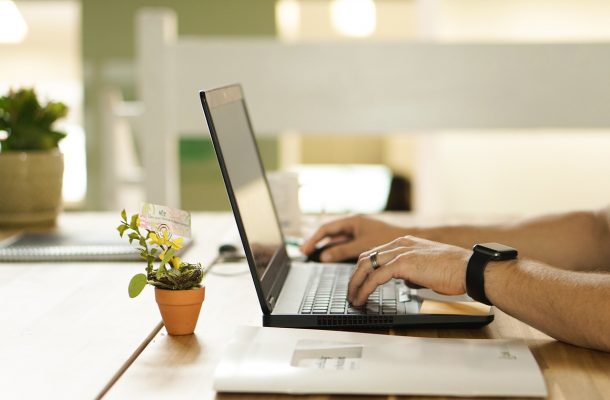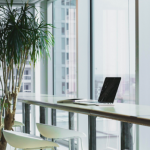Why your workspace is vital for productivity

We spend so much time at work; we should make it enjoyable. The work environment affects our state of mind and really plays a significant role in our psychological well-being, creativity and ultimately, our productivity.
One of the biggest drivers of the remote workforce is that remote employees can produce better results than their traditional counterparts stuck behind their desks. Research from Gallup backs this up; it states that workers who spend three to four days of the week working off-site are substantially more engaged in their jobs.
Who would have thought? Today most leaders are concerned that their remote workers will be less productive, less engaged, less committed, less loyal and the list goes on. However, the logic behind this productivity boost is easy to understand.By giving workers more control over their personal lives and allowing them to schedule their work/life balance accordingly, companies are helping employees be happier and more fulfilled.
There is one aspect of working from home that might seem mundane but is critical whether you are a leader, manager or full-time remote worker.
While some can work in a different physical area every day and remain productive, in practice this doesn’t work for everyone. Often a person’s home office or workstation provides the stability that balances a more mobile or flexible office space experience, where desk space may not be guaranteed and movement around the office is the norm. A dedicated work space at home provides that recurring, organised, well-structured space to come back to, where concentration and privacy are guaranteed.
There is no one-size-fits-all solution when creating a dedicated workspace, but there are some things to consider to maximise productivity.
Control your space
Whether it’s music you need or total silence, you have to be able to create the ideal environment to be your most productive self. Having a place where you can close the door and cut out the rest of the world is often vital for focus. If you don’t have an office at your disposal, find an area you can convert and create your ideal space. If you get creative, you can use even the smallest of spaces. One of the more creative options I have seen is to install a fold-down desk in a child’s bedroom – while they’re at school, their room can become your office.
Within controlling your space is controlling distractions. The home is full of distractions; the TV, family members and other non-work paraphernalia are constant reminders of the things we like indulge in outside of the office, and theallure can often be too hard to resist. Best practice fridge management is of course, a padlock on the fridge. But seriously, in accepting that you cannot rid your home of distractions, use them as a reward. We tend towork well when we know there’sa light at the end of the tunnel, so use this and treat yourself after a tricky task or making a difficult phone call. Spur yourself on to do your best work and fully enjoy the reward.
Proper lighting
For most of us, we want natural sunlight and sitting near the window is ideal. It is also important that your internal lights will not create headaches or lead to eye strain. Pick what’s right for your tasks: the lighting needs of a graphic designer working with colour and images is different to that or a writer or analyst looking at black words and figures on a white background all day. Know what you need and light your space appropriately.
Be organised
Your space might becluttered because you’re a busy executive, or because “that’sjust how you like to work”. On the other hand, those distractions can drain your attention. So be tidy and structured.Those with cluttered and messy desks can spend an average of 4.3 hours per week searching for things, which increases stress and reduces concentration and creative thinking. Imagine what you could do in the time while you are looking for that bit of paper.
Are you sitting comfortably?
If you are working eight-hour days, you’re probably spending more time in that chair than your bed. So, make it comfortable, invest in the right chair for you, even if comfort doesn’t equal stylish. Your body will thank you after a long day.
Get the right hardware
If you need it to do your job, get it. The point is that you shouldn’t need to share your work printer with your teenager as they print their project and use up all the ink, leaving you unable to when you’re on a deadline. Get the technology you need. It’s worth the investment (and it can be a tax write-off).
Have a functional desk
Small can be aesthetically pleasing, but it isn’t practical. You need space to collect ideas, store non-digital records, and conduct your day-to-day business. Get the right desk to spread out in whatever shape or form you need to. It doesn’t have to be fancy or even new. Older wooden desks often hold up better than new, cheaper versions and are usually larger.
Be inspired
We’re all inspired by different things, so whatever puts a sparkle in your eyes or gives you a fuzzy feeling, place it in your workspace. In moments of boredom or frustration, it can be the little things, like a comic strip or a favourite childhood character that give you a moment of relief, laughter or motivation to complete your work.
As a leader it’s vital that you have a workspace that keeps you inspired, motivated and productive. If you can assist your team to design a workspace that works for themandpositively influences health, wellbeing, satisfaction, and performance, you’ll see wellbeing improve and ultimately, commitment.
Nina Fountain is the CEO of The Workspace Connection, formally, Transformed Teams. A leading expert on remote and flexible work, Nina has consulted with leading businesses, conducted research and provided advice to many employers. Nina now assists businesses to drive amazing service outcomes and powerful staff engagement through clear results management, leadership and highly productive remote and virtual work arrangements.








